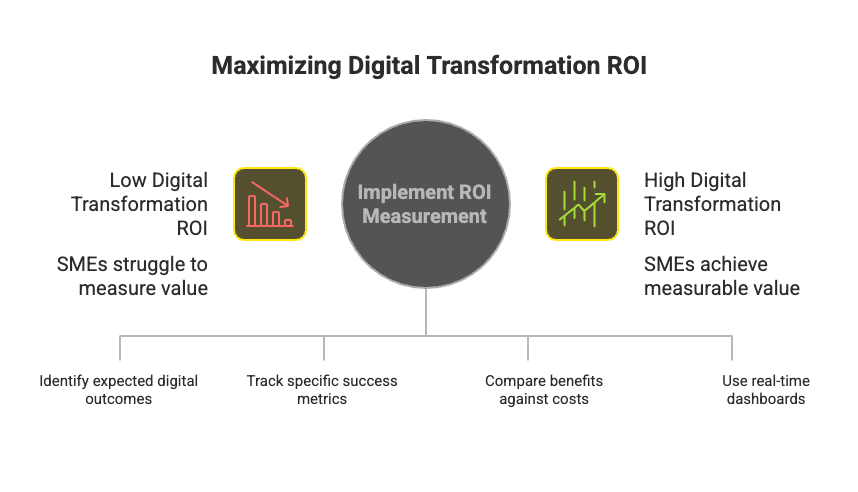For Hong Kong firms, where data security regulations and customer trust are paramount, adopting a proactive and comprehensive cybersecurity strategy is no longer optional—it’s a necessity. This article will explore why cybersecurity is vital during digital transformation, the unique challenges Hong Kong businesses face, and practical strategies to secure sensitive digital assets.
Why Cybersecurity is Essential During Digital Transformation
Digital transformation introduces new technologies, systems, and processes, all of which expand the attack surface for potential cyber threats. Here’s why cybersecurity plays a critical role in this transition:
- Increased Cyber Threats - The more businesses digitize their operations, the more vulnerable they become to cyberattacks, such as ransomware, phishing, and data breaches. In 2025, cybercriminals are leveraging AI and automation to carry out more sophisticated attacks.
- Data Protection Requirements - Hong Kong businesses must comply with the Personal Data (Privacy) Ordinance (PDPO) and other international regulations like GDPR if they handle international data. Failing to secure sensitive customer information can result in hefty fines and reputational damage.
- Customer Trust - Today’s customers value privacy more than ever. A single cybersecurity incident can erode trust and lead to long-term consequences, including customer churn and loss of revenue.
- Operational Continuity - A cyberattack can disrupt business operations, leading to downtime, financial losses, and damaged relationships with clients and partners.
- Compliance in a Digital Economy - As Hong Kong firms adopt technologies like AI, IoT, and cloud computing, maintaining compliance with cybersecurity and data protection laws is critical to avoid penalties and ensure smooth operations.
Unique Cybersecurity Challenges for Hong Kong Firms
Hong Kong’s position as a financial and business hub presents unique cybersecurity challenges for local firms:
- High Threat Landscape
Hong Kong’s reputation as an international financial center makes it a prime target for cybercriminals. Industries such as finance, retail, and healthcare are particularly vulnerable. - Regulatory Compliance
Hong Kong businesses must navigate a complex regulatory environment, balancing local laws like the PDPO with international standards. - Supply Chain Vulnerabilities
Many SMEs and enterprises in Hong Kong rely on global supply chains. Cyber threats targeting third-party vendors can expose businesses to significant risks. - Talent Shortage
The demand for skilled cybersecurity professionals in Hong Kong continues to outpace supply, leaving many firms underprepared to deal with emerging threats.
Key Cybersecurity Strategies for Hong Kong Firms
To stay protected in 2025, Hong Kong firms must adopt proactive and comprehensive cybersecurity measures. Here are essential strategies tailored to the unique needs of businesses undergoing digital transformation:
- Implement Zero-Trust Architecture - Adopt a zero-trust security model, which assumes that no user or device can be trusted by default. This involves verifying all users and devices before granting access to sensitive systems or data.
- Encrypt Sensitive Data - Use end-to-end encryption to protect sensitive information, whether it’s stored on servers, transmitted across networks, or accessed via cloud platforms.
- Invest in AI-Powered Cybersecurity Tools - Leverage AI-driven tools to detect and respond to threats in real-time. These tools can identify unusual patterns, stop attacks before they cause damage, and provide actionable insights.
- Conduct Regular Risk Assessments - Perform frequent cybersecurity audits to identify vulnerabilities in your digital infrastructure. Address these gaps before they can be exploited.
- Adopt Multi-Factor Authentication (MFA) - Strengthen access control by implementing MFA across all systems and applications. This adds an extra layer of security by requiring multiple forms of verification.
- Train Employees on Cybersecurity Best Practices - Employees are often the weakest link in cybersecurity. Conduct regular training sessions to educate staff on recognizing phishing emails, using strong passwords, and reporting suspicious activity.
- Secure Third-Party Integrations - Evaluate the cybersecurity practices of vendors and third-party providers. Ensure that their systems don’t create vulnerabilities in your supply chain.
- Back Up Critical Data - Maintain regular backups of essential data to mitigate the impact of ransomware attacks or accidental data loss. Ensure backups are encrypted and stored securely.
- Stay Compliant with Regulations - Familiarize yourself with Hong Kong’s PDPO and other relevant regulations. Work with legal and cybersecurity experts to ensure compliance.
Cybersecurity Technologies to Watch in 2025
Emerging technologies are helping businesses stay ahead of cyber threats. Here are some of the most promising cybersecurity solutions for 2025:
- Behavioral Analytics
Tools that analyze user behavior to detect anomalies and potential threats, such as unauthorized access or unusual data transfers. - Quantum Cryptography
Advanced encryption methods powered by quantum computing to provide unprecedented security for sensitive data. - Extended Detection and Response (XDR)
A unified security solution that integrates data across endpoints, networks, and servers to detect and respond to threats more efficiently. - Blockchain for Security
Using blockchain to secure transactions, verify identities, and ensure data integrity. - IoT Security Solutions
Specialized tools designed to protect connected devices from vulnerabilities and breaches.
Measuring Cybersecurity Success
To ensure your cybersecurity efforts are effective, track the following key metrics:
- Incident Response Time
Measure how quickly your team can detect, respond to, and mitigate cyber threats. - Number of Threats Prevented
Track the volume of cyberattacks or attempted breaches that were successfully blocked. - Compliance Rate
Evaluate how well your business adheres to regulatory requirements and internal security policies. - Downtime Reduction
Monitor how cybersecurity measures have minimized downtime caused by attacks or system failures. - Employee Awareness
Assess how well employees understand and follow cybersecurity best practices.


.png)

